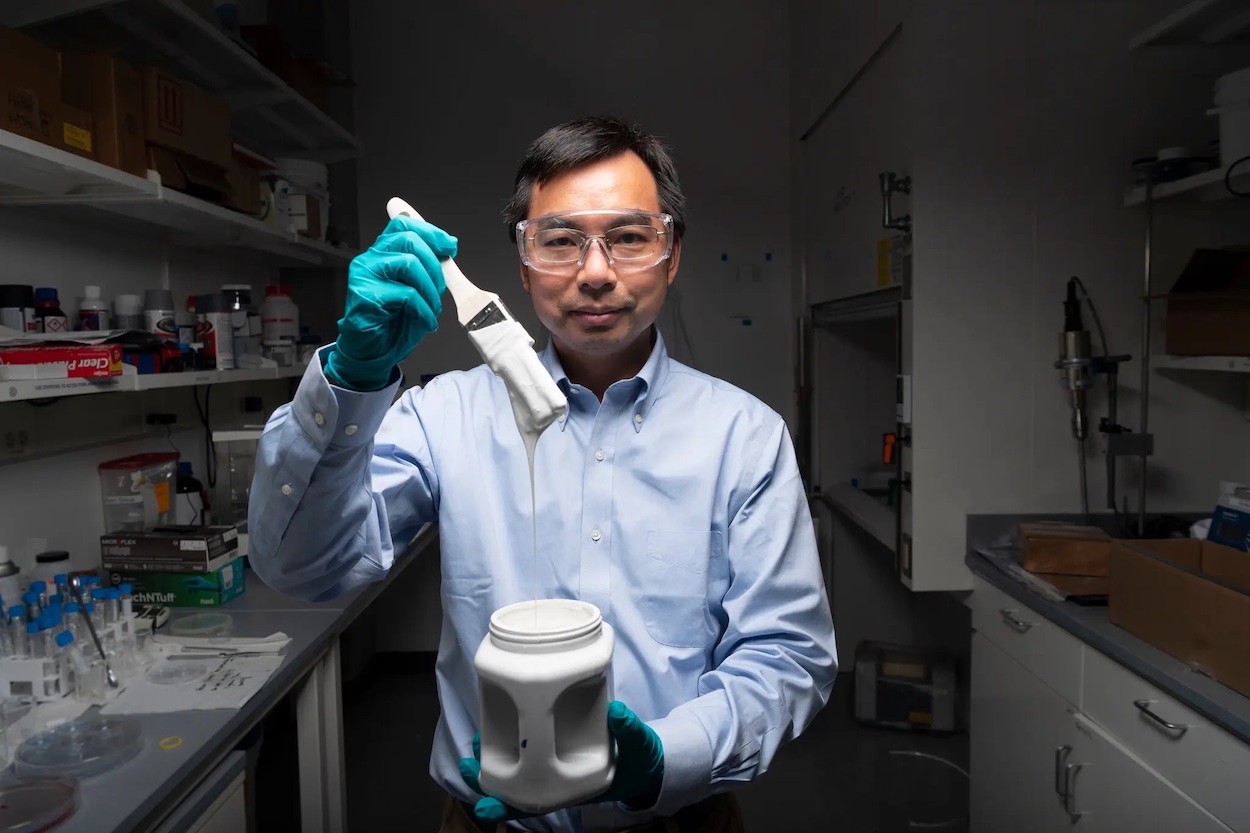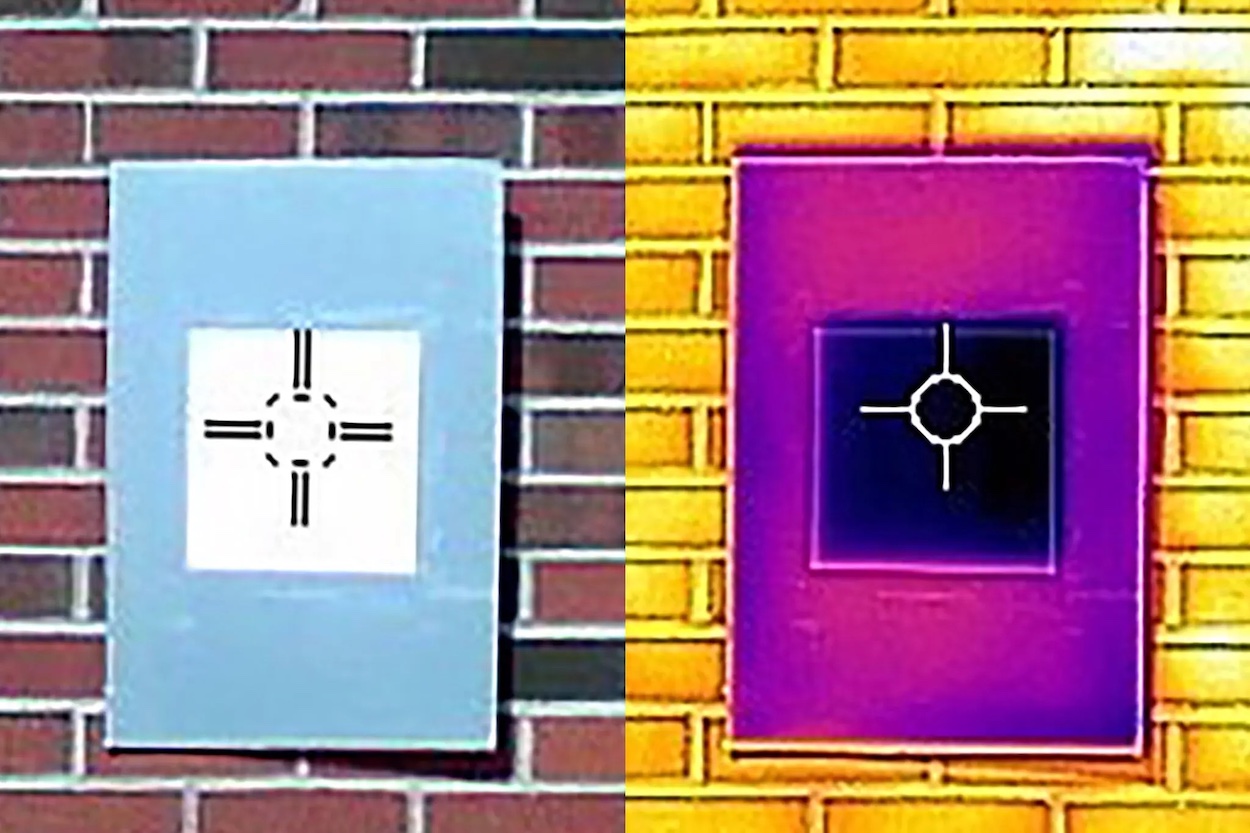First came Vantablack in 2014: the world’s darkest material created by Surrey Nanosystems absorbed 99 percent of visual light and also set the art world alight in a comedy of one-upmanship over licensing rights. Then, in 2019, MIT unveiled its Blackest Black, a carbon nanotube material that absorbs ten times more light than Vantablack. But in 2020, Purdue University’s Dr. Xiulin Ruan, a mechanical engineering professor, embarked on a different path: creating the most reflective pigment for use in climate-cooling paint.
“If you were to use this paint to cover a roof area of about 1,000 square feet, we estimate that you could get a cooling power of 10 kilowatts. That’s more powerful than the central air conditioners used by most houses,” Ruan said in 2021, when the university first announced the innovation. Since then, the professor and his lab team have updated the formulation to reflect 98.1 percent of sunlight and infrared heat, and developed a lighter-weight version (pictured above) suitable for vehicles.
In contrast to conventional heat-reducing paints that reflect 80 to 90 percent of sunlight, Purdue’s paint is a significant advancement. Its high reflectivity allows it to cool surfaces—and interiors—more effectively than most air conditioners, without contributing to heat emissions. As Dr. Ruan explained in a recent interview, it could potentially reduce air conditioning needs by up to 40 percent.
“I never expected that our cooling paint technologies would attract so much media attention,” Ruan tells Surface. “It really amazed me how much our society cares about mitigating the climate crisis with innovative yet simple solutions.”
The one, ahem, bright spot in a sequence of increasingly worse heat waves and historically hot ocean temperatures is the news that this paint could be ready for commercial use in a year, or possibly longer. The university researchers are working with an unnamed company to also develop colored paints that will use the Purdue white as a base for other pigments, though Ruan notes, “they will work less ideally than the white [alone], but better than some of the other commercial colors.”


